
The arrival of the second wave of 5G: 30 countries in 2023 will launch services
- Categories:Industry News
- Time of issue:2023-04-04
(Summary description)The new data of GSMA Intelligence shows that as technological innovation has accelerated the speed of connection, the number of 5G connections will be doubled in the next two years; in 2023, more than 30 new 5G 10G SFP+ SR networks will be deployed in the world, and these new deployments will be deployed in these new deployments. In the network, it is expected that 15 will be 5G independent networks. GSMA Intelligence predictions show that mobile users and enterprises will experience significant growth. As of the end of 2022, the number of consumers has exceeded 1 billion, which will increase to about 1.5 billion this year, and will reach 2 billion by the end of 2025. This momentum confirms that 5G is the fastest -generation product compared to 3G and 4G 10G SFP+ SR. As of January 2023, there are 229 commercial 5G networks around the world, and more than 700 5G smartphones are available for users. Opening of emerging markets The growth will also from the key markets in the Asia -Pacific region and the Latin American region, such as Brazil and India. The two countries have recently launched a 5G 10G SFP+ SR network. India will be particularly important, and the expansion of the AIRTEL and JIO services in 2023 will be important to the area of 5G in the region. GSMA Intelligence predicts that by the end of 2025, India will have 4 5G networks and 145 million new users. Many new 5G markets planned to launch the Internet in 2023 are located in the development regions of Africa and Asia, including Ethiopia and Ghana. Today, the 5G 10G SFP+ SR penetration rate in the south of Sahara is less than 1%, but by 2025, it will reach more than 4%, and it will reach more than 16%by 2030. This will be largely due to industry and government organizations with citizens. Common efforts of connection. Peter Jarich, the head of GSMA Intelligence, said: "So far, the adoption of 5G has been driven by consumers such as relatively mature markets and enhanced mobile broadband, but this situation is changing. We are now entering 5G's No. 1 No. 1. The two waves, this technology will attract different new markets and audiences. Extending to new use cases and markets will challenge the mobile ecosystem to prove that 5G 10G SFP+ SR is indeed flexible enough and can meet these different needs in a tolerance and innovation manner. " The rise of 5G FWA As of January 2023, more than 90 fixed broadband service providers (most of them were mobile operators) launched 5G commercial fixed wireless services in more than 48 countries. This means that about 40%of the world's 5G commercial mobile products include FWA products. In the United States, T-Mobile and Verizon added a total of 3.17 million FWA users in 2022. By 2025, T-Mobile is expected to have 8 million FWA users, while Verizon's goal at the same time is 5 million FWA users. Moreover, as operators such as JIO announced the connection of up to 100 million households across India to its 5G FWA network, the number of FWA users may increase significantly in the next few years. Although most 5G FWA deployment is concentrated in the 3.5–3.8GHz band, some operators around the world have used 5G millimeter wave spectrum as booster 10G SFP+ SR for capacity and performance to supplement the coverage provided by lower frequency bands. So far, only 7%of 5G commercial networks use 5G millimeter wave spectrum, but given 27%of the spectrum distribution and 35%tests have been using 5G millimeter wave bands, this situation seems to change. In addition, in 2023 alone, the industry will allocate the use of 5G millimeter wave spectrum, which is significantly increased significantly compared to the 22 countries so far. Spain received the first 5G millimeter wave spectrum distribution in Europe this year. Therefore, Spain Telecom, Ericsson and Qualcomm launched the first commercial 5G 10G SFP+ SR millimeter wave network on MWC in Barcelona in 2023. Enterprise Internet of Things promotes growth GSMA Intelligence's data also shows that for operators, the corporate market will be the main driving force for the growth of 5G revenue in the next ten years. The income from commercial customers has accounted for about 30%of the total income of major operators. With the expansion of the digital scale of enterprises, this potential will further expand. Edge computing and IoT technology have provided further opportunities for 5G. 12%of operators have launched special wireless solutions 10G SFP+ SR . This number will grow with the expansion of the Internet of Things deployment in 2023. Another main development of the enterprise market will be the commercial use of 5G Advanced in 2025. The 5G Advanced focusing on uplink link technology will improve speed, coverage, mobility and energy efficiency, and support new waves of business opportunities. GSMA's network transformation survey shows that half operators are expected to support 5G Advanced commercial networks within two years after the launch of 5G commercial
The arrival of the second wave of 5G: 30 countries in 2023 will launch services
(Summary description)The new data of GSMA Intelligence shows that as technological innovation has accelerated the speed of connection, the number of 5G connections will be doubled in the next two years; in 2023, more than 30 new 5G 10G SFP+ SR networks will be deployed in the world, and these new deployments will be deployed in these new deployments. In the network, it is expected that 15 will be 5G independent networks.
GSMA Intelligence predictions show that mobile users and enterprises will experience significant growth. As of the end of 2022, the number of consumers has exceeded 1 billion, which will increase to about 1.5 billion this year, and will reach 2 billion by the end of 2025. This momentum confirms that 5G is the fastest -generation product compared to 3G and 4G 10G SFP+ SR.
As of January 2023, there are 229 commercial 5G networks around the world, and more than 700 5G smartphones are available for users.
Opening of emerging markets
The growth will also from the key markets in the Asia -Pacific region and the Latin American region, such as Brazil and India. The two countries have recently launched a 5G 10G SFP+ SR network. India will be particularly important, and the expansion of the AIRTEL and JIO services in 2023 will be important to the area of 5G in the region. GSMA Intelligence predicts that by the end of 2025, India will have 4 5G networks and 145 million new users.
Many new 5G markets planned to launch the Internet in 2023 are located in the development regions of Africa and Asia, including Ethiopia and Ghana. Today, the 5G 10G SFP+ SR penetration rate in the south of Sahara is less than 1%, but by 2025, it will reach more than 4%, and it will reach more than 16%by 2030. This will be largely due to industry and government organizations with citizens. Common efforts of connection.
Peter Jarich, the head of GSMA Intelligence, said: "So far, the adoption of 5G has been driven by consumers such as relatively mature markets and enhanced mobile broadband, but this situation is changing. We are now entering 5G's No. 1 No. 1. The two waves, this technology will attract different new markets and audiences. Extending to new use cases and markets will challenge the mobile ecosystem to prove that 5G 10G SFP+ SR is indeed flexible enough and can meet these different needs in a tolerance and innovation manner. "
The rise of 5G FWA
As of January 2023, more than 90 fixed broadband service providers (most of them were mobile operators) launched 5G commercial fixed wireless services in more than 48 countries. This means that about 40%of the world's 5G commercial mobile products include FWA products.
In the United States, T-Mobile and Verizon added a total of 3.17 million FWA users in 2022. By 2025, T-Mobile is expected to have 8 million FWA users, while Verizon's goal at the same time is 5 million FWA users. Moreover, as operators such as JIO announced the connection of up to 100 million households across India to its 5G FWA network, the number of FWA users may increase significantly in the next few years.
Although most 5G FWA deployment is concentrated in the 3.5–3.8GHz band, some operators around the world have used 5G millimeter wave spectrum as booster 10G SFP+ SR for capacity and performance to supplement the coverage provided by lower frequency bands.
So far, only 7%of 5G commercial networks use 5G millimeter wave spectrum, but given 27%of the spectrum distribution and 35%tests have been using 5G millimeter wave bands, this situation seems to change. In addition, in 2023 alone, the industry will allocate the use of 5G millimeter wave spectrum, which is significantly increased significantly compared to the 22 countries so far. Spain received the first 5G millimeter wave spectrum distribution in Europe this year. Therefore, Spain Telecom, Ericsson and Qualcomm launched the first commercial 5G 10G SFP+ SR millimeter wave network on MWC in Barcelona in 2023.
Enterprise Internet of Things promotes growth
GSMA Intelligence's data also shows that for operators, the corporate market will be the main driving force for the growth of 5G revenue in the next ten years. The income from commercial customers has accounted for about 30%of the total income of major operators. With the expansion of the digital scale of enterprises, this potential will further expand. Edge computing and IoT technology have provided further opportunities for 5G. 12%of operators have launched special wireless solutions 10G SFP+ SR . This number will grow with the expansion of the Internet of Things deployment in 2023.
Another main development of the enterprise market will be the commercial use of 5G Advanced in 2025. The 5G Advanced focusing on uplink link technology will improve speed, coverage, mobility and energy efficiency, and support new waves of business opportunities. GSMA's network transformation survey shows that half operators are expected to support 5G Advanced commercial networks within two years after the launch of 5G commercial
- Categories:Industry News
- Time of issue:2023-04-04
- Views:
The new data of GSMA Intelligence shows that as technological innovation has accelerated the speed of connection, the number of 5G connections will be doubled in the next two years; in 2023, more than 30 new 5G 10G SFP+ SR networks will be deployed in the world, and these new deployments will be deployed in these new deployments. In the network, it is expected that 15 will be 5G independent networks.
GSMA Intelligence predictions show that mobile users and enterprises will experience significant growth. As of the end of 2022, the number of consumers has exceeded 1 billion, which will increase to about 1.5 billion this year, and will reach 2 billion by the end of 2025. This momentum confirms that 5G is the fastest -generation product compared to 3G and 4G 10G SFP+ SR.
As of January 2023, there are 229 commercial 5G networks around the world, and more than 700 5G smartphones are available for users.
Opening of emerging markets
The growth will also from the key markets in the Asia -Pacific region and the Latin American region, such as Brazil and India. The two countries have recently launched a 5G 10G SFP+ SR network. India will be particularly important, and the expansion of the AIRTEL and JIO services in 2023 will be important to the area of 5G in the region. GSMA Intelligence predicts that by the end of 2025, India will have 4 5G networks and 145 million new users.
Many new 5G markets planned to launch the Internet in 2023 are located in the development regions of Africa and Asia, including Ethiopia and Ghana. Today, the 5G 10G SFP+ SR penetration rate in the south of Sahara is less than 1%, but by 2025, it will reach more than 4%, and it will reach more than 16%by 2030. This will be largely due to industry and government organizations with citizens. Common efforts of connection.
Peter Jarich, the head of GSMA Intelligence, said: "So far, the adoption of 5G has been driven by consumers such as relatively mature markets and enhanced mobile broadband, but this situation is changing. We are now entering 5G's No. 1 No. 1. The two waves, this technology will attract different new markets and audiences. Extending to new use cases and markets will challenge the mobile ecosystem to prove that 5G 10G SFP+ SR is indeed flexible enough and can meet these different needs in a tolerance and innovation manner. "
The rise of 5G FWA
As of January 2023, more than 90 fixed broadband service providers (most of them were mobile operators) launched 5G commercial fixed wireless services in more than 48 countries. This means that about 40%of the world's 5G commercial mobile products include FWA products.
In the United States, T-Mobile and Verizon added a total of 3.17 million FWA users in 2022. By 2025, T-Mobile is expected to have 8 million FWA users, while Verizon's goal at the same time is 5 million FWA users. Moreover, as operators such as JIO announced the connection of up to 100 million households across India to its 5G FWA network, the number of FWA users may increase significantly in the next few years.
Although most 5G FWA deployment is concentrated in the 3.5–3.8GHz band, some operators around the world have used 5G millimeter wave spectrum as booster 10G SFP+ SR for capacity and performance to supplement the coverage provided by lower frequency bands.
So far, only 7%of 5G commercial networks use 5G millimeter wave spectrum, but given 27%of the spectrum distribution and 35%tests have been using 5G millimeter wave bands, this situation seems to change. In addition, in 2023 alone, the industry will allocate the use of 5G millimeter wave spectrum, which is significantly increased significantly compared to the 22 countries so far. Spain received the first 5G millimeter wave spectrum distribution in Europe this year. Therefore, Spain Telecom, Ericsson and Qualcomm launched the first commercial 5G 10G SFP+ SR millimeter wave network on MWC in Barcelona in 2023.
Enterprise Internet of Things promotes growth
GSMA Intelligence's data also shows that for operators, the corporate market will be the main driving force for the growth of 5G revenue in the next ten years. The income from commercial customers has accounted for about 30%of the total income of major operators. With the expansion of the digital scale of enterprises, this potential will further expand. Edge computing and IoT technology have provided further opportunities for 5G. 12%of operators have launched special wireless solutions 10G SFP+ SR . This number will grow with the expansion of the Internet of Things deployment in 2023.
Another main development of the enterprise market will be the commercial use of 5G Advanced in 2025. The 5G Advanced focusing on uplink link technology will improve speed, coverage, mobility and energy efficiency, and support new waves of business opportunities. GSMA's network transformation survey shows that half operators are expected to support 5G Advanced commercial networks within two years after the launch of 5G commercial networks. Although this may be optimistic, it provides a clear development direction for the ecosystem 10G SFP+ SR.
Scan the QR code to read on your phone
Related
-
New products | Sunstar announced: 50G PON three-mode combo OLT miniaturized optical device for SFP and QSFP packages
With the popularization of gigabit broadband, 10G PON has entered the stage of large-scale deployment. At the same time, the industry is also laying out 50G PON to prepare for the 10-gigabit era. Compared with 10G PON, the 50G PON standard provides five times more access bandwidth and better service support capabilities (large bandwidth, low latency, and high reliability). At the same time, for operators, the biggest problem facing the commercial use of 50G PON is the problem of multi-generation coexistence. ITU-T standards provide different options for the differentiated deployment of global operators. GPON region, G.9804.1 Amd2 and G.9805 offer 2 classes /5 options; EPON area, provides 2 types /4 options. From this point of view, multi-generation coexistence is an inevitable choice in the continuous evolution of the next generation PON. Sunstar Communication Technology Co.,Ltd.released 50G PON three-mode Combo OLT miniaturized optical device, which is MPM (built-in combined wave) 3-generation wave division mode coexistence, that is, G/XG(S)/50G three-mode MPM. The advantage of this solution is that the traditional gateway devices can be reused without changing or upgrading the user side, and the upgrade process can be optimized, equipment occupation and equipment room space can be saved, and energy consumption can be reduced. This three-mode Combo OLT miniaturized optical device uses a novel optical path design and a miniaturized TO-CAN package solution, and uses the technology accumulation and quality control of Sunstar Company in the field of coaxial packaging for many years, combining precision manufacturing, multi-wavelength spectrographic design and various types of TO-CAN package technology perfectly together. The 50G PON three-mode Combo OLT compact optical device of Sunstar Company is characterized by small size, high coupling efficiency, high structural reliability and strong manufacturability in mass production. The most critical is that its optimized optical path design and special packaging process ensure the upstream three-wavelength splitting, especially the isolation index of 50G PON upstream wavelength and GPON upstream wavelength, that is, the isolation degree of 1286±2nm and 1310±20nm edge wavelength; And take into account the high coupling efficiency of the downgoing three-way emitting laser to ensure the best output optical power index. This optical device is fully suitable for SFP and QSFP module packages, helping the access network to smoothly evolve to 50G PON. The 49th Optical Networking and Communications Symposium and Expo (OFC 2024) will be held from March 26 to 28, 2024 at the San Diego Convention Center, California, USA. The company will bring 10G PON OLT, 25G PON OLT, 50G PON OLT three-mode, 400G ER4 TOSA & ROSA, 800G DR8 optical module and a full range of AOC optical module solutions to the exhibition, welcome to visit the #3841 booth. About Sunstar Founded in 2001, Sunstar Communication Technology Co.,Ltd. focuses on the design, development, manufacturing, sales and technical support services of Optical Transceiver (OSA). After 20 years of technology accumulation and development, the formation of optical path, mechanical structure, high frequency simulation, thermal simulation, circuit, FPC soft board, IT software automation and other core technology design platform, and with precision machining, passive components, SMT, TO-CAN, OSA optical devices, COB, BOX, optical module the whole industry chain production and manufacturing capabilities. The company operates in China, North America, Europe, and Southeast Asia, and is also a subsidiary of the world's leading provider of optical fiber, cable and integrated solutions,YOFC Optical Fiber and Cable Co., LTD. - OFC2024 | Sunstar sincerely invites you to visit #3841 for negotiation and guidance 03-22
- Sunstar Combo 50G & XGS & GPON OLT QSFP-DD light module won the 2023 ICC "Excellent Technology Award" 01-10
- Tel:86-(0)28-87988088
- Fax:86-(0)28-87988568
- Address:4F.,Blog.D1,Mould lndustrial Park West High-tech Zone,Chengdu,Sichuan,P.R.C
Sunstar Communication Technology Co.,Ltd
Copyright © 2020 Sunstar Communication Technology Co.,Ltd All Rights Reserved 蜀ICP备19023203号-1




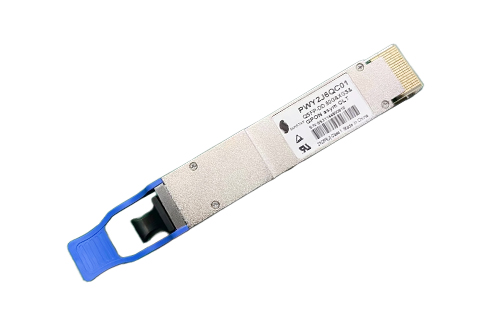
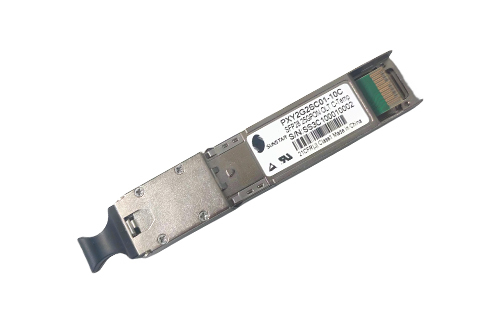


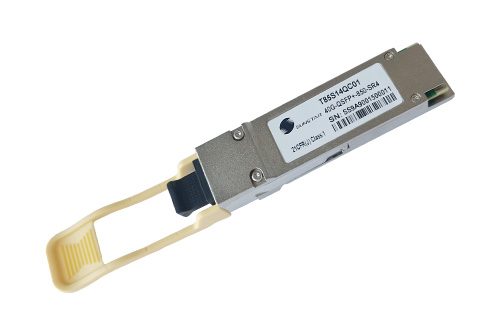


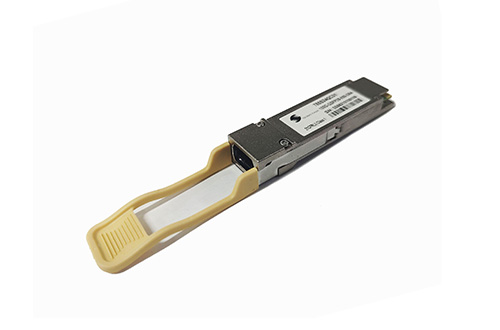
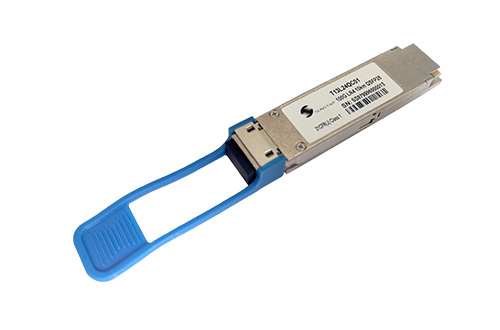
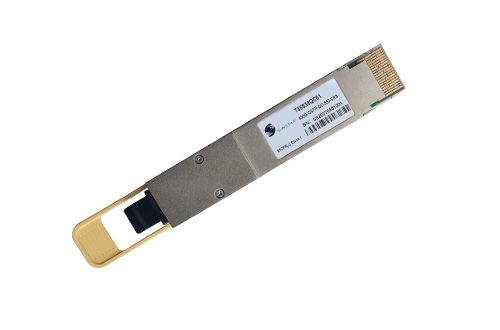
 Scan code
Scan code


